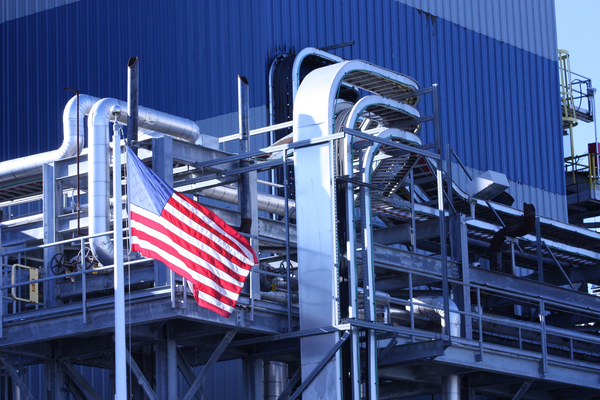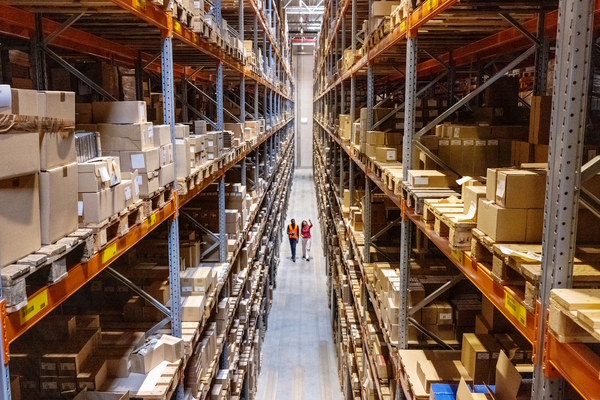Don’t be the weakest link: make data security your supply chain priority
Sean Carpenter at project44 shares insights into how to balance the risks and rewards of sharing data

In supply chains, data and trust go hand in hand. Collecting, maintaining, and analysing data is at the heart of an efficient supply chain, and how businesses monitor their connections and safeguard this data is paramount. From location sharing and shipment documentation, to IIoT devices and inventory management, organisations connect with exponentially growing data touchpoints every day that must be secured.
2022 brings more risks for supply chains, with shippers, carriers and suppliers facing an increased threat of cyber-attacks and ransomware. International initiatives like Data Protection Day bring data security into the limelight, but this is not a threat faced just once a year.
Data security is a constant and ever-evolving challenge for businesses, and major disruptions invite endless opportunities for breaches. It is vital that all data sources are secured, as the supply chain is only ever as strong as its weakest link.
Assess your touchpoints
Shippers increasingly consider Real-Time Visibility (RTV) as a must-have when choosing a transportation partner, and carriers need to be able to keep up with this increased demand for relevant, real-time data. But how do we keep this ever-expanding network secure?
The first step to securing your network is to assess your data touchpoints. Map out how data is being shared, used, and stored, which systems, tools, and people you have in action to ensure that it is secure, and what data security policies and processes are in place.
End-to-end protection of data is best achieved through encryption, with system access restricted, logged and audited. All employees have a responsibility to keep the organisation’s data secure, but your staff cannot mitigate the risks if they do not understand them.
Make it a priority to raise the baseline level of understanding and competence across the supply chain to create a sense of ownership and safeguard your data.
Get total visibility
Logistics companies must now operate in a much more networked and collaborative world. Smaller firms can be especially sceptical of new systems and devices, raising concerns around data security. However, these developments form an essential part of the digitalised supply chain, allowing shippers and carriers to effectively monitor their networks and respond rapidly to changing dynamics.
End-to-end visibility is now an expectation rather than a desire, with businesses of all sizes needing to integrate with multiple partners and systems to achieve visibility across the extended supply chain. With this large-scale integration, the only way to win the trust of your employees and partners is with an air-tight data security strategy in place.
Work with trusted suppliers and solutions
To ensure that your organisational and employee data is secure, you must only implement solutions and work with partners that adhere to the most stringent data security regulations. Due to the international nature of supply chain, data rights can change quickly across country and state borders, so it is essential that your organisation and partners respect different laws such as GDPR.
Look out for solutions that are ISO 27001 certified, the global standard for mandating controls for the establishment, maintenance, and certification of an information security management system (ISMS), as well as regional accreditations like SOC 2.
This certification is also something that your organisation should work towards, as those accredited enforce the highest levels of data protection, vital when processing abundant data and sensitive information.
Focus on data storage
How you store your data is a crucial aspect of your data security. On-premise data centres can be difficult to secure, with many organisations unable to fund a data security expert in-house to maintain the security of a sprawling data network.
Investing in secure cloud services like AWS or Google Cloud is a great way to safeguard data, with in-built flexibility to handle changing demand and quantities of data as required. An essential part of disaster recovery planning, these systems have multiple failovers in place to reduce system downtimes and potential supply chain disruption.
Be proactive
You cannot rely on monitoring, alerting and intrusion detection systems to keep your data safe. You need to continuously assess and improve your processes, policies and plans to keep up with evolving threats to your data.
Work vulnerability management into your data security strategy and monitor for intrusion at all times. Pivot your thinking towards a risk-centric approach to data security, proactively seeking out opportunities for threat. For an extra layer of security, carry out trusted third party penetration testing to ensure that there are no potential chinks in your armour that can be exploited.
Data security should always be a priority to protect your business and customers. However, you must not forget that the benefits of data sharing far outweigh the potential risks. When done securely, effective integration can monitor, streamline, and enhance operations, facilitating collaboration and end-to-end RTV.
Make your data robust to build trust with your customers and employees and ensure that you meet their ever-evolving standards.
Sean Carpenter is Senior Director, Product Management & Data Privacy at project44

Business Reporter Team
Most Viewed
Winston House, 3rd Floor, Units 306-309, 2-4 Dollis Park, London, N3 1HF
23-29 Hendon Lane, London, N3 1RT
020 8349 4363
© 2025, Lyonsdown Limited. Business Reporter® is a registered trademark of Lyonsdown Ltd. VAT registration number: 830519543





